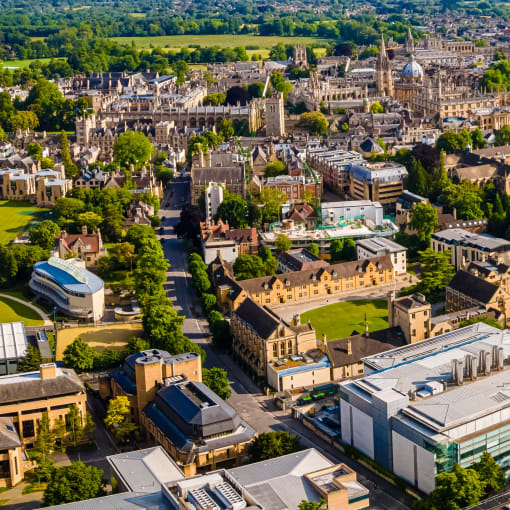Oxford University Press
The largest university press in the world reaches new audience with digitized content.

Harness the power of a unified content, process and application intelligence platform to unlock the value of enterprise content.
Learn more
Explore Hyland’s solutions by industry, department or the service you need.
Overview of solutionsIt's your unique digital evolution … but you don't have to face it alone. We understand the landscape of your industry and the unique needs of the people you serve.
 Overview of industries
Overview of industries
Countless teams and departments have transformed the way they work in accounting, HR, legal and more with Hyland solutions.
 Overview of departments
Overview of departments
We are committed to helping you maximize your technology investment so you can best serve your customers.
 Overview of services
Overview of services

Discover why Hyland is trusted by thousands of organizations worldwide.
Hear from our customers
Our exclusive partner programs combine our strengths with yours to create better experiences through content services.
Overview of partners
Find resources to power your organization's digital transformation.
Browse the resource center
Hyland connects your content and systems so you can forge stronger connections with the people who matter most.
Learn about HylandWith our modern, open and cloud-native platforms, you can build strong connections and keep evolving.
 Dig deeper
Dig deeper
Reading time minutes
The largest university press in the world reaches new audience with digitized content.

Oxford University Press (OUP) is the largest university press in the world, publishing in more than 40 languages. As a department of the prestigious University of Oxford, it furthers the University's objective of excellence in research, scholarship and education.
OUP has a diverse publishing program, publishing across a variety of formats in both print and digital, and to a wide range of audiences — from pre-school to secondary school, students to academics, readers to researchers, individuals to institutions. The aim of the organization is to make content available to users in whichever format suits them, as part of their overall aim of furthering education and disseminating knowledge as widely and as effectively as possible.
As part of its effort to reach new audiences through digital content, OUP was seeking a globally distributed digital asset management platform (DAM) that would allow it to maximize its considerable library of digital assets and increase collaboration across the entire organization.
With over 6,000 employees and millions of assets to be managed, OUP required a DAM solution that would be robust, scalable and globally accessible.
OUP is organized into divisions, each with its own knowledge, content and digital assets. The primary purposes of the DAM were defined as increasing collaboration and communication across all divisions, minimizing manual administration, cost and effort, and maximizing the utilization of assets.
Particularly, OUP cited a requirement to:
— Kate Granville, Technology Director of Oxford Education
Following a formal evaluation process involving twelve companies, Hyland's Alfresco platform was chosen to deliver a global DAM system that would meet OUP's requirements.
The DAM solution developed allows editors, publishers, designers and content workers to manage the entire editorial cycle; from initial concept and definition, through early research, to commissioning and creation of books and electronic interactive products. This speeds up product design and delivery, making working more efficient and economical, as well as making it easier to ensure that all specifications are fulfilled and quality checks and rights clearances carried out.
The system incorporates different levels of security and access, allowing internal project managers to share limited content with external freelancers working in a globally dispersed manner, without exposing the entire assets library. This centralized control allows the press to maintain better regulation of assets, as well as giving a high-level view of who is able to access what and when.
Within OUP's legacy systems, assets were contained in disparate content silos, making it difficult and time consuming for divisions to communicate or collaborate on projects. The new DAM solution assigns an Alfresco Site corresponding to each division, all existing on one integrated platform.
Alfresco platform includes powerful search and retrieval functionality, which vastly improves asset discoverability by allowing users to search across sites, within sites, within projects, within folders, etc.
Advanced search options within the solution include:
The DAM's enhanced search functionality also allows for a variety of personalized views (simple, detailed, grid, gallery, preview, endless scroll), delivering a custom experience to users and helping them find what they need, when they need it.
The new, integrated, global DAM is built upon an open, flexible and future-proof architecture and leverages Alfresco's open source ECM as an editorial platform and content store, integrated with MarkLogic as a flexible, scalable NoSQL database, Dell DX as an Object Storage Platform and Solr for powerful search and retrieval functionality. The DAM solution integrates with OUP's existing desktop publishing system and provides an end-to-end content solution that allows users to continue working in a way that is familiar to them and minimizes disruption.
On top of its print needs, OUP has a significant and rapidly expanding digital output, and the Alfresco DAM will provide significant quality and process improvements within these areas. As a single source of truth, the platform provides a centralized hub for all discoveries and editorial needs across the organization and takes into consideration immediate and future needs as it continues to evolve.
The Alfresco platform allows OUP to store and access all of its digital assets securely in a way that makes them easily manageable and discoverable, aiding reuse and repurposing of content. This allows OUP to increase the value of its assets and reach audiences more quickly and efficiently. From an organizational standpoint, communication and collaboration have been improved across departments, allowing for greater levels of cooperation and knowledge- sharing. Streamlined workflow and approval processes allow for more efficient and economical working, as well as ensuring accuracy and compliance with product specifications.